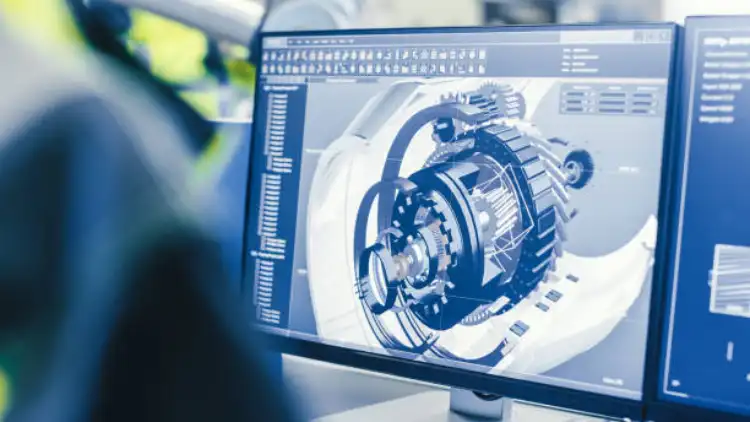The implementation of affordable CAD software can substantially enhance design efficiency. By streamlining workflows and automating tasks, designers can focus on high-value activities. This, in turn, can lead to substantial productivity gains and cost savings. However, the full extent of these benefits depends on various factors, including the software’s capabilities and the design team’s needs, which warrants further exploration.
Design Process Simplification
As the demand for efficient design workflows continues to grow, utilizing affordable CAD software can substantially simplify the design process by streamlining tasks and reducing the complexity associated with traditional computer-aided design methods. Affordable CAD software provides designers with a cost-effective solution to create, modify, and analyze designs, thereby enhancing overall design efficiency.
By leveraging affordable CAD software, designers can automate repetitive tasks, minimize manual errors, and focus on high-level design decisions.
The use of affordable CAD software enables designers to work on multiple design iterations, collaborate with stakeholders, and track design changes effectively.
Affordable CAD software also offers a range of tools and features that support design standardization, component libraries, and design reuse. This facilitates design consistency, reduces design time, and improves design quality.
With affordable CAD software, designers can optimize their design workflows, increase productivity, and deliver high-quality designs within tight deadlines.
Affordable CAD software is a crucial tool for design teams seeking to simplify their design processes and improve overall design efficiency.
Error Reduction Techniques
Efficient design workflows, facilitated by affordable CAD software, rely heavily on minimizing errors to maintain productivity and design integrity. Error reduction techniques are vital in guaranteeing that designs are accurate and reliable.
Utilizing inexpensive CAD software can substantially reduce errors by providing features such as automated checks and simulations. These features enable designers to identify and correct errors early in the design process, preventing costly rework and revisions.
Inexpensive CAD software often includes tools for design validation, such as clash detection and interference checking. These tools help designers detect potential errors and inconsistencies in their designs, allowing them to make corrections before proceeding.
Additionally, many inexpensive CAD software solutions offer collaborative features, enabling multiple designers to work together on a project and reducing the likelihood of errors caused by miscommunication. By leveraging these error reduction techniques, designers can guarantee that their designs are accurate, reliable, and meet the required specifications. Sneak a peek at this site to buy the best cheap CAD software.
Increased Productivity Gains
The utilization of affordable CAD software can substantially enhance design productivity by streamlining workflows and automating repetitive tasks. This enables designers to focus on high-value tasks, such as concept development and design optimization. By leveraging the best cheap CAD software, users can access advanced tools and features that facilitate efficient design creation, editing, and collaboration. Automated tasks, such as data exchange and file conversion, can also be performed with ease, further boosting productivity.
The increased productivity gains resulting from affordable CAD software can be attributed to its ability to simplify complex design processes. Designers can quickly create, modify, and analyze designs, reducing the time spent on manual tasks.
The best cheap CAD software often includes features such as parametric modeling, simulation, and rendering, which enable designers to test and validate their designs in a virtual environment. By adopting affordable CAD software, design teams can markedly improve their overall efficiency and responsiveness to changing project requirements. This, in turn, can lead to faster time-to-market and improved competitiveness.
Cost Effective Solutions
Because budget constraints often limit the adoption of CAD software, cost-effective solutions are essential for individuals and organizations seeking to leverage computer-aided design capabilities without incurring substantial expenses. Affordable CAD software options can provide a viable alternative to traditional CAD systems, offering a range of features and functionalities at a lower cost.
Cheap CAD software, in particular, has become increasingly popular, as it enables users to create and edit 2D and 3D models without breaking the bank. The cost-effective solutions offered by cheap CAD software can be attributed to various factors, including cloud-based deployment models and subscription-based pricing.
These models allow users to access CAD software without having to purchase expensive licenses or hardware. Additionally, many cheap CAD software options provide free trials or limited versions, enabling users to test and evaluate the software before committing to a purchase.
Streamlined Workflow Management
Streamlined workflow management is essential for maximizing productivity in CAD environments, where complex design projects often involve multiple stakeholders, iterative revisions, and strict deadlines. Affordable CAD software can play a pivotal role in streamlining workflow management by providing features such as automated task assignments, real-time collaboration tools, and version control systems.
Cheap CAD programs can help design teams manage their workflows more efficiently, reducing errors and delays. These affordable CAD solutions enable designers to focus on the creative aspects of their work, rather than getting bogged down in administrative tasks.
Conclusion
Affordable CAD software enhances design efficiency through streamlined workflows and automated tasks. Error reduction techniques and advanced features facilitate design creation and validation. Overall, implementation of affordable CAD software yields increased productivity gains, cost-effective solutions, and simplified design processes, ultimately resulting in improved design efficiency and consistency.







